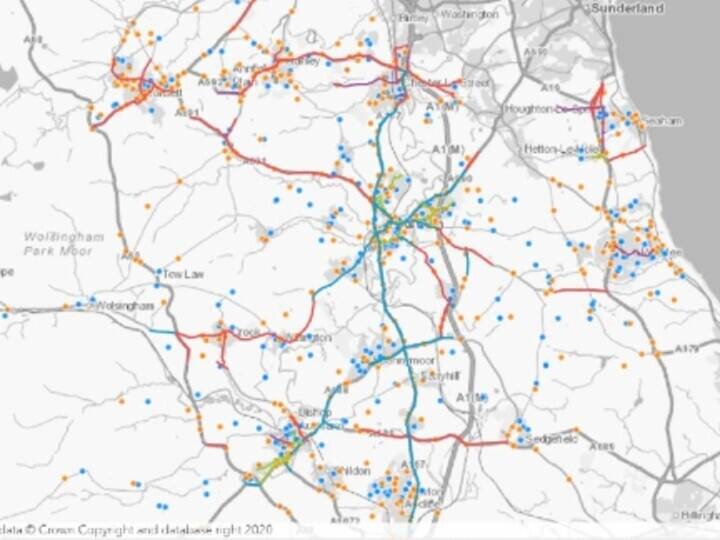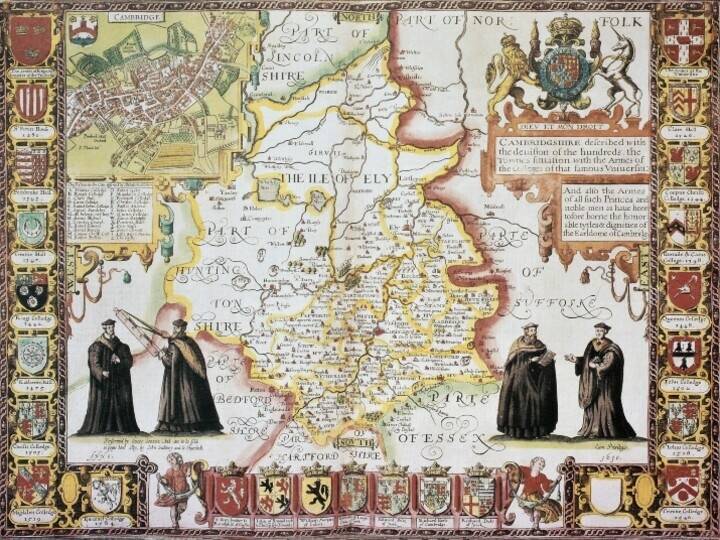This GIS Professional article describes how Harrow has implemented geographic information (GI) through the NLPG across its activities, delivering major cost savings, winning awards and more importantly, providing better services to residents.
HARROW COUNCIL recognised that their waste collections system could be improved using geographic information (GI) technology and more efficient processes. But when the council ventured into this realm they and partners Capita surprised themselves with the levels of saving achieved, estimated at £3.2m over ten years.
To achieve this goal the whole waste collection and disposal process from doorstep to landfill was looked at. What was previously a good but paperbased system was restricted and included lengthy time delays in information passing between collection crews, back office teams and residents. Improvements were identified and the business case was simple – collecting rubbish more efficiently and recycling more of it added up to millions of savings. GI lay at the core of the project; take it out and the concepts fell apart. Now it provides the key backbone to the system along with the integrated technology it sits on.
Harrow’s new waste management system handles three bin types for each property: recycled waste, general waste and organic waste. Each bin is linked to a unique property reference number (UPRN) held in the LLPG – the local land and property gazetteer. This system is wirelessly linked to vehicle cabs and integrates internally with the call centre’s customer relationship management system (CRM). This allows the driver to update collection or missed bin information in real time which is relayed to back office and CRM systems. Both systems independently receive address updates on a daily basis from the LLPG.
A London Borough has been implementing GI through the NLPG across its activities, delivering major cost savings, winning awards and more importantly, providing better services to residents. Andrew Coote introduces Matt Pennell’s and Luke Studden’s article.
This is the first of a series of articles on best practice in developing business cases for geospatial information and technology. We start with looking at a local government case study. Local government GIS is “at the eye of the storm” at the moment, being asked to help generate efficiencies for their organisation as part of IT-led service transformation to meet the Government’s cutbacks whilst facing reductions in their own resources.
What is impressive about the team at Harrow Borough is that they start from the perspective of evaluating the benefits to the organisation and its customers. They also recognise that GIS is just a means to solving a business problem and so have been part of a much larger team that has realised some very impressive benefits.
As a result, their senior management have had the confidence to back them on a number of projects which they have been able to implement with the minimum of “internal” barriers. The team has rightly been rewarded by multiple awards for their work, most notably at the NLPG awards in Sheffield last November.
Residents’ enquiries
Forms on the MyHarrow web portal are also linked to the CRM and the waste management system; these are facilitated by the LLPG. The forms allow residents to enquire about missed bins and receive up-to-date information on why their bin was not collected or if in fact the bin lorry is not quite there yet. In addition, the LLPG is also used for the waste management system’s integrated route optimisation module, which is already delivering a 15% reduction in fuel use.
GI is integrated into the final solution in many places. For example, RouteSmart in ArcMap consumes Ordnance Survey ITN and LLPG data and provides route optimisation on a nightly basis for commercial waste collections; the key identifier for location and bin ID is the LLPG’s UPRN. Back office managers can view the location of vehicles using GPS trackers and missed bin information has a spatial location and can be analysed in ArcMap.
Use of the web is growing with transactions via this channel, making up nearly 60% of the total as Harrow residents choose to self-serve when it comes to waste and recycling queries. In the Access Harrow call centre there has already been a noticeable change, with overall call volumes down by 3%, those associated with the environment down by 7% and those specifically to do with missed bins down by 25%. These amount to over 200 fewer calls per week. 95% of the remaining calls are being resolved at first contact. Furthermore, the number of outbound follow-up calls has been slashed by 95%. Call duration has also been cut by 45 seconds on the average call, which lasts 248 seconds. Costs too have been reduced significantly from £2.23 per enquiry in 2006/7 to £0.82 in 2009/10.
“. . the business case was simple, collecting rubbish more efficiently and recycling more of it. . .”
Reducing environmental impact
An associated benefit, in addition to the financial savings, is the huge reduction in environmental impact, thereby dramatically reducing Harrow’s carbon footprint. The recycling rate for household waste is on target to reach 50% in 2011 while the amount of waste going to landfill has been reduced by 18.8%. These new services are all underpinned by the council’s high quality address database, the LLPG. Reduction in fuel usage through effective route optimisation saved £11,000 in year one alone and is yet another green benefit.
As new properties get built, or existing ones get converted into flats, the LLPG is updated and routes automatically re-calculated. In a fast-growing borough like Harrow, with a number of new developments, the accuracy of the LLPG is vital to maintaining these levels of service efficiency and in moving forward the council’s carbon footprint reduction plans.
After a year of the project going live, further spatial analysis of collection data was undertaken. Each time a bin is not collected, a reason is recorded, such as “bin not out” or “contaminated bin”, e.g. plastic bag in the organic brown bin. This data was GiSProfessional 19 analysed to highlight the geographical areas or streets that were not complying; intensive door-to-door knocking was undertaking in the worst offending areas to educate residents in the correct procedures and collection days. This further reduced the number of calls coming into the call centre as it proactively targeted the source of regular issues.
The success of the Waste Collector project in local and national awards including the NLPG Exemplar Awards has delivered a key benefit: recognition that GI can deliver savings in a big way. This has led to a corporate understanding and recognition in other existing and upcoming projects.
But that’s not all. . .
Harrow’s GIS Team work on the basis that unlike polygons, GI has no boundaries and the sharing of GI project ideas, skills and data is key, especially in difficult financial times. Growing GI recognition is the backbone of a high percentage of council processes.
Harrow has also developed an in-house online citizen information portal, MyHarrow. This was initially created to deliver location-based information to residents based on their location, such as bin collections and local councillor information. MyHarrow, now moving into phase 6, has grown and adapted to include more and more information and has become a driver in the council’s channel migration efforts to move to more cost-effective methods of communication. Harrow recently integrated its customised Experian customer insight data into MyHarrow to deliver a targeted marketing solution that allocates cross-selling “Did You Know” links relevant to each customer, based on their address.
To underpin this, Harrow developed an Esri-based solution called the “LLPG Integrator”, which links the LLPG into widespread council functions. By using Python programing language to automate geoprocessing tasks, the LLPG is spatially enriched with a plethora of attributes and is placed at the core of address capture and look-up channels such as web forms, enabling residents to report / request services, location-based services and address search utilities. The benefits are multifaceted and spearhead one of the council’s key corporate priorities of delivering “Cleaner, Safer Streets” for residents.
“. . .the accuracy of the LLPG is vital to maintaining these levels of service efficiency. . .”
“The aim is to maximise vehicle usage and cost savings through route optimisation no matter how small.”
Widening GI access
To widen the access of GI, Harrow started the “Hub Maps” project to develop a lightweight intranet mapping system providing access to GI for all staff whilst also making significant cost savings. The project is shifting a number of desktop GIS users to the Hub Maps and therefore frees up associated desktop GIS licence fees. In addition, the infrastructure built around the Hub Maps project facilitates our corporate “Mobile and Flexible Working” project, a move towards a mobile workforce that can work more efficiently from more locations. Hub Maps allows our GIS infrastructure to be highly accessible to all staff, enabling them to use it in or out of the office. Hub Maps will display data from ArcSDE, ArcServer and external geo-referenced web services.
The proliferation of GI in society has lead to an increasing understanding of location and proximity. We now have residents who are spatially literate and spatially aware. To meet this change Harrow are placing mapping and Esri technology at the front of customer services and incident reporting in the borough. The Streets & Ground Maintenance Project is aimed at delivering an improved service to residents enabling them to mark incidents on a map, which they wish the council to know about such as fly tipping in a park or broken street lights. Previously, staff had rough textual descriptions to guide them to a problem. Now, by getting incidents reported on a custom built Esri map interface, staff can pinpoint the location and take action quicker and at the same time residents can fully exploit the services we provide which are underpinned by GIS.
The little things count
The GIS team also considered just how many vehicles head out on the roads each day delivering a huge range of council services. So building on the big route optimisation projects, we decided that it’s now time to think on a more granular scale – every last mile saved counts! Using ArcLogistics, we are reviewing as many small driving routes as we can, starting with Meals on Wheels. The aim is to maximise vehicle usage and cost savings through route optimisation no matter how small. It also doesn’t stop there. We have council officers out on foot everyday conducting a range of visits. The potential to optimise their routes represents a great opportunity to maximise use of their time.
Council staff would like to be available all the time to serve residents but we can’t be everywhere at once. To tackle this, Harrow plans to put some video contact booths around the borough to make contacting the council a bit easier for those not near the One Stop Shop. Using GI analysis with the help of Network Analyst, ArcMap and Experian Mosaic data, we have worked out the best places to place these booths to maximise usage by the correct demographic and service users. The ease and speed of analysis in ArcMap has highlighted to senior management the key importance of basing decisions on good GI.



